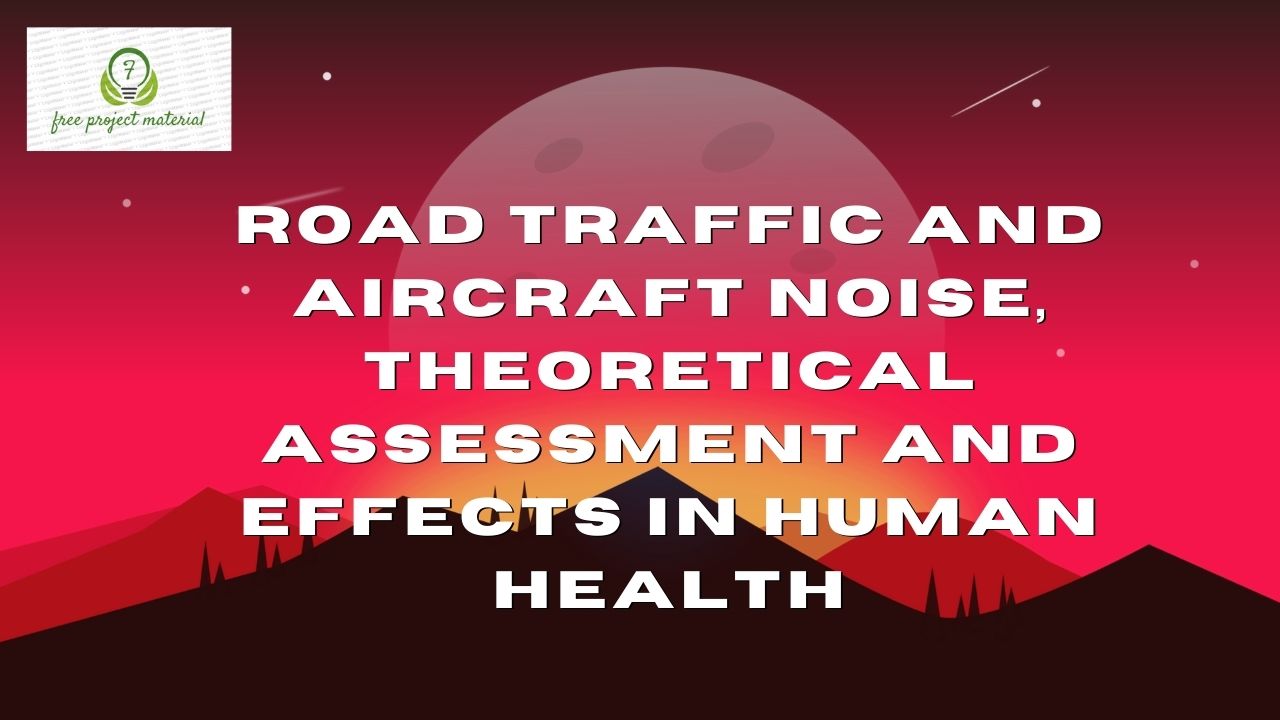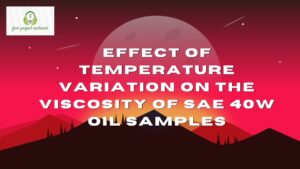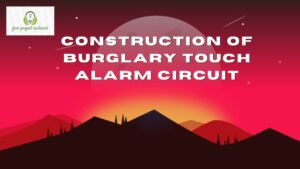ABSTRACT
Noise at residential and work places have been reviewed. It was noticed that noise impacts, causes hearing loss, which can be temporary or permanent. People often experienced temporary distress after leaving a noisy place although hearing loss recovered within a few hours is a sign that, if one continues to be exposed to the noise, hearing can be permanently damaged. Permanent hearing damage can be caused immediately by sudden, extremely loud, explosive noises. Hearing loss was not only the problem, people may also develop tinnitus (ie ringing, whistling, buzzing or humming in the ears) a distressing condition that can lead to disturb sleep. Noise regulation, required specific steps like, the level of exposure to noise and are maximum noise (ie peak sound pressure) to which people are exposed to, noise exposure levels allowed are, daily or weekly exposure of 87 Db (A) and peak sound pressure of 140 dB (A). These exposure limit values, take into account of any reduction in exposure provided by hearing protection. Finally, it concluded that, where assessment of noise exposure shows that people are likely to be exposed at or above the upper exposure action values, a planned programme of noise control must be put in place.
TABLE OF CONTENTS
Title page- – – – – – – – – – i
Certification- – – – – — – – – ii
Dedication- – – – – – – – – – iii
Acknowledgement- – – – – – – – iv
Abstract- – – – – – – – – – v
Table of contents- – – – – – – – – vi
CHAPTER ONE
1.0 INTRODUCTION – – – – – – 1
1.1 Brief Survey- – – – – – – – 2
1.2 Scope and Limitation of Study- – – – – 10
1.3 Aim and Objective- – – – – – – 11
CHAPTER TWO
2.0 LITERATURE REVIEW- – – – – – 12
CHAPTER THREE: ORDINANCE AND LAW
3.0 Nuisance Laws- – – – – – – – 20
3.1 Fundamentals of Noise- – – – – – – 21
3.2 Environmental Noise Policy- – – – – – 23
CHAPTER FOUR: NOISE AND HUMAN HEALTH
4.0 Noise Control Techniques- – – – – 29
4.1 General Impact of Noise- – – – – – 32
4.2 Impact on Human Health- – – – – 34
CHAPTER FIVE: DISCUSSION AND CONCLUSION
5.0 Discussion – – – – – – – – 38
5.1 Conclusion – – – – – – – – 42
References
CHAPTER ONE: INTRODUCTION
1.0 INTRODUCTION
In acoustics noise is defined as unwanted sound. It may be unwanted because it causes general feeling of annoyance, interfere with or prevents the hearing of speech, music or other wanted acoustic signals (McGraw-Hall Encyclopedia of science and technology, 1977) in the case noise is subjective.
In communications, the term noise was originally applied to electronic disturbance that interfere with the sending and receiving of telephone and radio messages.
In cybernetics (the science of communication and controls of machines) the noise concept means anything that interferes with the ideal functioning of an entire cybernetics system or part of it. Noise may often come from outside the cybernetics system in the case of the auto and its drivers. On the other hand, noise may arise within a cybernetic system.
That is, damaged or poorly designed parts may be interfere with the smooth operation of the system.
Noise may conveniently be classified as either random or non-random noise. Random noise may be defined as a noise which is not predictable, although it may be exhibit statistical regularities. While non-random noise is usually as a result of radiation from other electric equipment’s unwanted. Coupling with other system or spurious osculation within an electric circuit.
1.1 Brief Survey
Many studies have been conducted on the effect of noise, indirectly these noise problems can have serious social and economic effects upon communities.
In 1969, they Walsh-Healey public contracts act was amended to include for the first time a federal safety regulation on industrial noise exposure (Cunniff, 1977).
In Singapore it has been reported that noise cause a variety of physical and psychological stresses (The new book of popular science, 1979). Studies in high-rise apartment building are often attributed to noise generated by neighbour’s radios, construction machinery and traffic and even the clacking of Mah-Jongg tiles has been criticized (The New Book of popular science, 1979).
In most cases of hearing loss, there is a gradual shifting of the threshold of hearing due to repeated exposure to noise, such as a factory worker exposed to high noise levels over a span of several years. This is called noise-included cochlea injury (Cunniff, 1977).
A noise-induced permanent threshold shift can occur from a catastrophic noise exposure such as a fire cracker exploring close to one’s ear. Research also stresses that chronic exposure to sound may lead to permanent hearing threshold shifts, depending on the source intensity, frequency content and time duration (Cunniff, 1977).
In 1962, a study was conducted on the hearing of members of the Mabaan tribe, who are located in a remote part of the Sudan. Their hearing was judged to be far superior to people who exposed to noise levels found in industrialized nation (Cunniff, 1977).
Recently in Nigeria a clinical audiologist, Dr A. B. Adedugbe in (1992) has called for an urgent government policy to check the indiscriminate noise pollution in industries and urban centers. According to Dr. Adebugbe (1992) the world health Organization (WHO) recommended noise decibel is go, but in many Nigerian industries, this could be as high as 180 to 200 decibel and this is largely responsible for the increasing deafness and partial hearing prevalent in the country.
In a recent survey conducted by Drs. Onuu and Menkiti (to be published the following conclusions were drawn among others Viz,- that sleep and rest are they activities seriously disturbed by road traffic noise and that levels exceeded for 100% of the measurement time (L 10) in schools and hospitals are as high as 81.0 and 83.8 dB (A) respectively implying that less than 45% sentences intelligility is achieved in accordance with the United State environmental protection Agency (EPA) Standard. A 10-t of data on environmental acoustic have been accumulated which leads credence to the fact that associated noise levels bodies 11.1 to this and future generation.
Statically method:- The analysis were based on cox proportional hazards model with age as the underlying time. This ensured comparison of individuals of the same age. We use left truncation at age of enrolment, so that people were considered at risk from enrolment into the cohort, and right cencoring at the age Mi (event), death, emigration or end of follow- up (27 June, 2006), which over came first. Exposure to road traffic noise and Nox were modeled as time- weighed averages the preceding 5-years (taking all present and historical addresses in that period into account) at a given age or as the yearly exposure at the residence at a given age. These exposures (1- and 5- years) were entered as time-dependent variables into the statistical risk model, thus for each incident M1 recalculating exposure for all cohort members at exacting the same age as the case and at risk at the time of the Ml. e incidence rate ratios (IRRS) for MI in association with road traffic noise where calculated for 1 (yearly road traffic at diagnosis, and 20 times- weighed mean road traffic noise 5 years preceding diagnosis. Estimates were calculated crude and adjusted for a priori defined potential confounders: sex, baseline information on status (never, former, current), smoking intensity (1-14, 15-24 and 25g tobacco/ day), smoking duration (years), intake of fruit (g/day), intake of vegetable (g/day) education (<8, 8-10, >10 years), alcohol intake (g/day), body mass index (BMI, 18, 18-25, 26-30 > 30KG/m2) and physically active (not active, < 3.5, > 3.5h/week).
Information on calendar year, and information on covariates based on address specific information: railway and airport noise (mainly based on data from the rate 1990’ies (railway noise >60 dB (yes/no); and on air pollution (No x, Ug/m3, data on exposure at the residence in the period from 1988-2006, calculated as 1) yearly means at the residential address of diagnosis, and 2) 5 years time- weighed mean preceding diagnosis, such that the each analysis the exposure calculated for NDx are similar to the exposure calculated for road traffic noise). In a third model we further adjusted for base line measured diastolic and systolic blood pressure (mm hg), measured total cholesterol (mmol/L) and self- reported diabetes. Traffic noise, air pollution smoking duration, intake of fruits and vegetables, systolic and diastolic blood pressure and total cholesterol of were entered as linear variables. Intake of alcohol was included as a spline with a cat- point at 3g/day. The potential modifiers of an effect between road traffic noise and M1 by a prior selected baseline. Road traffic is the most important source of community noise. Even though very high levels of traffic noise i.e, average day-night A- weighed equivalent noise level exceeding 65 dB (A), seem to have stabilized in some countries, the group living in dwellings exposed to 55-65 dB (A) is increasing in total approximately 30% of the population in the European Union still is exposed to a day-night average of traffic noise exceeding 55 dB (A).
Non- auditory physical health effects that are biologically plausible in relation to noise exposure and annoyance from noise exposure include changes in blood pressure, heart rate and levels of stress hormones, the biological mechanism through noise to hypertension is thought to be mediated through sympathetic and endocrine stress response with subsequent acute changes in vascular tension. The hypothesis is that long- time exposure to noise could result in lasting cardiovascular changes. Such as atherosclerosis, and increase cardiovascular risk as well as hypertension.
Effects on road and air traffic noise in ischaemic heart disease, means blood pressure and hypertension were for ischaemic heart disease (including myocardial infarction) were found at average day time level below 60 dB (A). but increased risk were relatively consistently found at higher average levels, which has also been confirmed in a recent meta- analysis traffic noise seemed to moderately increase mean blood pressure in children, whereas the findings in adults were inconsistent with respect to traffic noise and hypertension, the review showed a heterogeneous picture. A consistent positive association between aircraft noise and hypertension was found with growing evidence since the previous review in this area. A number of recent studies (after the review in 2006) have provided further evidence for associations between traffic noise and ischaemic heart disease between aircraft noise and hypertension. However, also recent studies of road traffic noise and hypertension are heterogeneous with respect to effect size, effect among male and female and with respect to effect across age groups. One plausible explanation for the diverging results is that overall association between road traffic noise and hypertension is the weak at average noise level typically found in most urban environments. It is also conceivable, however, that effect are more marked at higher exposure levels, in certain age groups or in order subgroups of the population, but investigating such associations generally requires large population studies. In a large pooled European population sample based on blood on blood pressure measurements, the prevalence of hypertension increases from 27% in the age groups 35-44 years to 78% among subjects 65-74 years old given this dramatic increase in the prevalence of hypertension age. It is most unlikely that the relative effect of road noise exposure is constant across age groups but few studies have used exposure disease models that allow for effect modification by age.
The aim of this study was to further explore the association between road traffic and hypertension and investigate whether this association was differential with respect to genders or age, or especially marked in vulnerable groups within the population. The study used cross-sectional data from a large public health survey data assessed for the current residential addresses of the survey participants using a geographical information system (GIS).
1.2 Scope and Limitation
The scope of this theoretical assessment of effects of head and traffic noise on human health is to elaborate the fact that loud noise can damage hearing. This work is therefore limited to helping people understand what they need to do, under the noise control of their residence and work place. And also how the can protect themselves from loud noise.
1.3 Aim and Objectives
The aim of this research work, in the assessment of noise on health, is to help Nigerians decide what to do to ensure their health and safety, when exposed to loud noise.
The objective is to estimate the type of work to do, the way in which the work is done and how it might vary from day to day, in a noisy environment.


